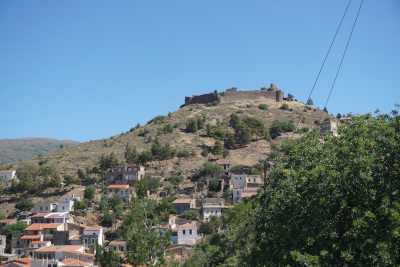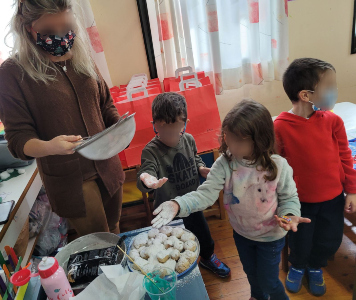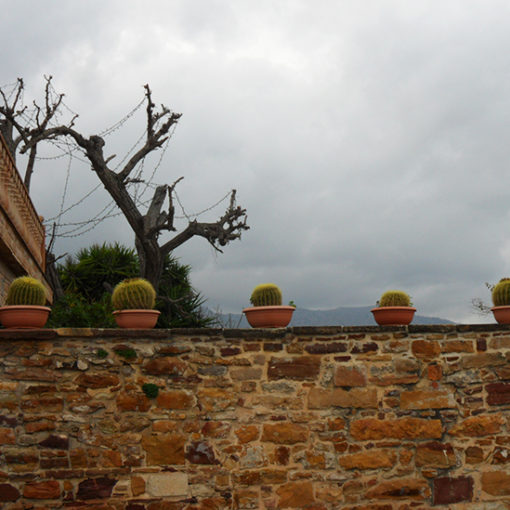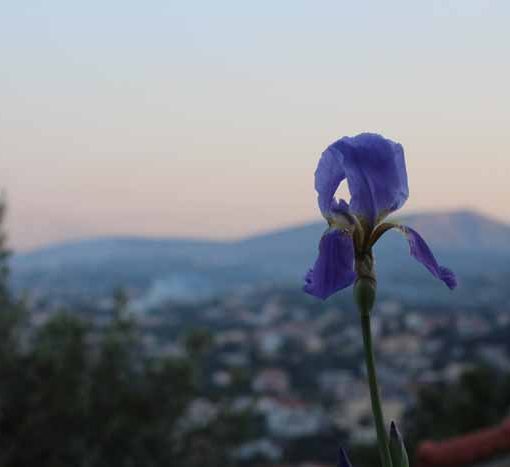Trip to Kampos 2022
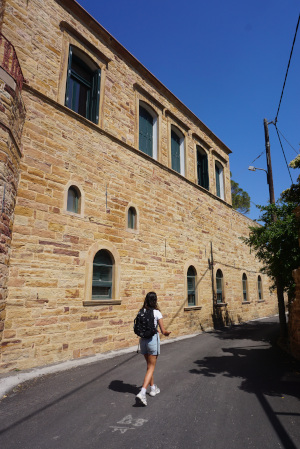
On the Southern part of Chios you will find the area of Kampos. On a sunny spring day, we went to visit this area of the Island. As soon as we entered Kampos, we could appreciate how unique it was. The buildings stand out form the rest, and you can clearly see the influences of the Genoese and the Ottoman traditions. The houses, or better said, mansions, have big walls of stone, some so big that you cannot even see the houses themselves. They also have incredible gardens, filled with flowers and trees, and most of them with pebble floors depicting some animals or figures, and impressive Orchards.We also encountered the Citrus Museum, which informs about the citrus fruits, traditional of this area, its production and cultivation, and also about the history of this area. But we only made
a quick stop to see it from outside, and continued our route.
But before explaining anything further, its important to know a little bit of the history of Kampos. As we know, Kampos is an important area thanks to the fertility of its land and its clossenes to the city. Before the arrival of the Genoes, it is known that there were important cultivations, specially of olive trees and vines. During the 13th century, Chios was a part of the Latin Empire of Constantinople, and later of the Empire of Nicaea.
But in the next century the Genoese conquered Chios and they established in Kampos a Maona, an association of investors typical of the medieval Italy. This association was under the rule of the Giustiniani family. They are credited to be the creators of the orchards and, especially, of the architecture of the houses, including their big ornamented doors. Kampos became the settlement of the Genoese nobility, and their status was shown in their distinctive coats of arms that where displayed in the gates. It is important to say that the byzantine families that lived in the land before, still lived there after the arrival of the genoese, but they were assimilated into the new reality. Kampos is, to this day, the best example of the relations and culture of the Genoese in Chios.
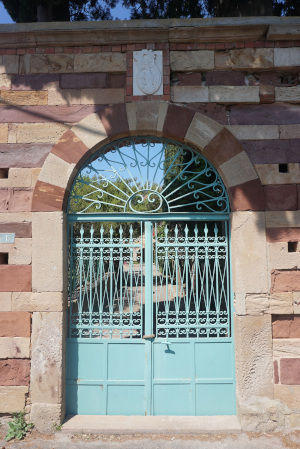
But in the 16th century, the Genoese rule came to an end with the Ottoman domination of the Island. For the coming centuries, the situation was not ideal for the Catholics, and many estates changed hands and the churches their doctrines. In the 18th century, Kampos was a completely orthodox area and they saw new benefits from their new owners, rich traders of silk fabrics with important connections to Istanbul and other cities in the Mediterranean. The Massacres of 1822 and 1828, together with the robbery of the mansions, including burning down the orchards, led to an abandonment of the Kampos area for some years. But it blossomed again thanks to new landowners. It is also important to mention that because of the earthquake of 1881, most buildings, and sadly families in Kampos, along with the rest of the Island, were destroyed. After, came a period of reconstruction and the area of Kampos continued being a key point of wealth production during the 20th century, especially of citrus, until its decline after 1960. Later, Kampos acquired a new protection status from the Greek government and began a restoration of the mansions.
Knowing this important piece of history, it was easier for us to walk through the area. As I said before, we were focusing on the doors and gates, that were a key element of the architecture of the Geneoese. It is nice to take a regular walk through the area, and you would enjoy it as much, but for us it was better to go on a little adventure trying to find the coat of arms on the big gates. During our walk, we wondered at the big mansions, the churches and the overall atmosphere of the place. It is definitely a place to visit in Chios, specially if you want to experience something different with a special history to it.

